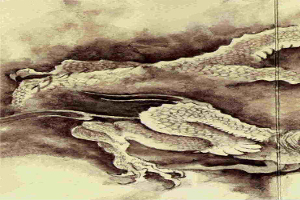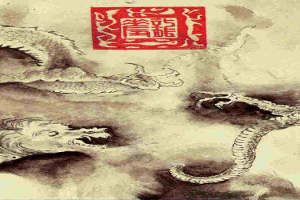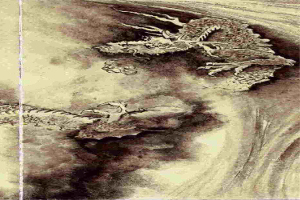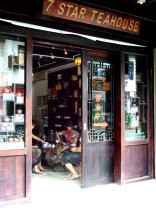 The first in a series of posts on Chinese Tea Culture or Cha Dao begins with an introduction to the Seven Stars Tea House in Yangshou.
The first in a series of posts on Chinese Tea Culture or Cha Dao begins with an introduction to the Seven Stars Tea House in Yangshou.
There was a time when, if you spent time in Yangshuo then at some point you would want to visit the Seven Star Tea House on Diecui Road, up near the bus station. Sadly the tea house is no more though you can still get a variety of drinks there including excellent coffee and their famous red or green bean ice drinks. Tea & Coffee as it’s now called, is still run by owner Annie Zhou who has lived in Yangshuo for over twenty years and really does know everyone in town.
The original Seven Star Tea House opened in 2004 and covered two floors with a tea shop downstairs and a seated, air conditioned tea rooms upstairs serving everything from soft drinks to snacks and of course tea. With her team of specially trained staff she always made you feel welcome and personally introduced me to the distinctively Chinese business of drinking tea. Of course times change and Annie decided that her business needed to change with it especially as the kind of tourists Yangshuo attracts has changed and there are less foreign travellers going there these days. So this blog post serves as a dedication to everything Annie taught me and as a reminder of all the great times I spent in her tea shop tasting different teas.
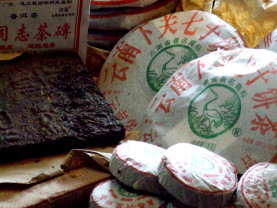 I have included a couple of photos I took of the tea shop when I first wrote some parts of this post for a travel guide hoping to promote Annie’s shop. There is also a link to a PDF I produced that includes a detailed guide on how to brew a cup of tea the Chinese way. I couldn’t help drawing on this material as for me meeting Annie was a start on my own personal journey into ‘tea-ism’. In fact Annie was the first person I met when I arrived by taxi late one night way back in 2007 and as has since then become a good friend. You could say she taught me everything I know.Roblox HackBigo Live Beans HackYUGIOH DUEL LINKS HACKPokemon Duel HackRoblox HackPixel Gun 3d HackGrowtopia HackClash Royale Hackmy cafe recipes stories hackMobile Legends HackMobile Strike Hack
I have included a couple of photos I took of the tea shop when I first wrote some parts of this post for a travel guide hoping to promote Annie’s shop. There is also a link to a PDF I produced that includes a detailed guide on how to brew a cup of tea the Chinese way. I couldn’t help drawing on this material as for me meeting Annie was a start on my own personal journey into ‘tea-ism’. In fact Annie was the first person I met when I arrived by taxi late one night way back in 2007 and as has since then become a good friend. You could say she taught me everything I know.Roblox HackBigo Live Beans HackYUGIOH DUEL LINKS HACKPokemon Duel HackRoblox HackPixel Gun 3d HackGrowtopia HackClash Royale Hackmy cafe recipes stories hackMobile Legends HackMobile Strike Hack
However I plan to update that early exploration with a more current exposition of what I now know about tea and tea culture. So what follows is a short introduction that I hope will go on to explore; types of tea in part 2, brewing tea in part 3 and health benefits of drinking tea in part 4. I don’t plan to write all this myself and will try and draw on some great graphics and visualise as much as possible. But lets start back in 2008 with the Seven Stars Tea Shop.
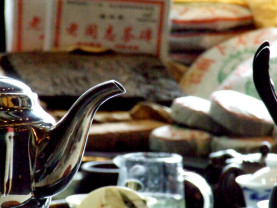 A unique feature of the Seven Stars Tea House was that was the only tea house in Yangshuo with its own tea plantation. Annie’s family got involved with the tea business after her brother saw that as people’s lives were improving the popularity of tea drinking was growing. Where as twenty years ago the people would not have been able to afford good quality teas now things had changed and the quality of life had improved. Seeing an opportunity to invest, in 2000 her family started to plant tea trees on a mountain close to her village, Jiaobalin near Yangshuo in Guangxi province. Now the Seven Stars Tea Plantation covers 40 hectares of mountainside and produces over 40 tons of the finest quality organic green tea. In 2009 their tea, Cuiyu Green Tea won the Guangxi Special prize at a tea tasting competition, rather like a wine tasting but better for you perhaps. The Cuiyu Green Tea, noted for its clear green colour and fragrant taste of chestnuts and fresh corn is exported across China to hotels and tea houses. You can even try it in Prague at!
A unique feature of the Seven Stars Tea House was that was the only tea house in Yangshuo with its own tea plantation. Annie’s family got involved with the tea business after her brother saw that as people’s lives were improving the popularity of tea drinking was growing. Where as twenty years ago the people would not have been able to afford good quality teas now things had changed and the quality of life had improved. Seeing an opportunity to invest, in 2000 her family started to plant tea trees on a mountain close to her village, Jiaobalin near Yangshuo in Guangxi province. Now the Seven Stars Tea Plantation covers 40 hectares of mountainside and produces over 40 tons of the finest quality organic green tea. In 2009 their tea, Cuiyu Green Tea won the Guangxi Special prize at a tea tasting competition, rather like a wine tasting but better for you perhaps. The Cuiyu Green Tea, noted for its clear green colour and fragrant taste of chestnuts and fresh corn is exported across China to hotels and tea houses. You can even try it in Prague at!
 Tea has always been an important part of Chinese way of life. The making of tea is called Chá Dào, literally meaning “tea brewed with great skill” and the art of brewing and serving tea plays a major cultural role in China. It is a time to unwind and socialise with friends while enjoying the smell and taste of fine quality teas. Tea drinking plays a part in pretty much all social occasions and when someone pours you a cup of tea this is seen as a sign of respect. It is even said in China that when you see someone on the street, before you even say “hello” you say “have you had tea yet”?
Tea has always been an important part of Chinese way of life. The making of tea is called Chá Dào, literally meaning “tea brewed with great skill” and the art of brewing and serving tea plays a major cultural role in China. It is a time to unwind and socialise with friends while enjoying the smell and taste of fine quality teas. Tea drinking plays a part in pretty much all social occasions and when someone pours you a cup of tea this is seen as a sign of respect. It is even said in China that when you see someone on the street, before you even say “hello” you say “have you had tea yet”?
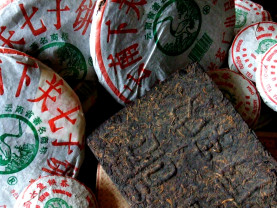 Tea is credited as being first discovered by the Chinese Emperor Shennong in 2737 BC. I t is said that the emperor liked his drinking water boiled before he drank it so it would be clean, so that is what his servants did. One day, on a trip to a distant region, he and his army stopped to rest. A servant began boiling water for him to drink, and a dead leaf from the wild tea bush fell into the water. I t turned a brownish colour, but it was unnoticed and presented to the emperor anyway. The emperor drank it and found it very refreshing, and cha (tea) was born. Considered to be the father of Chinese agriculture, Shennong, sometimes referred to as the ‘divine farmer’ is said to have taught his people how to cultivate grains as food, so as to avoid killing animals. Shennong is also credited with identifying hundreds of medical (and poisonous) herbs by personally testing their properties and is also believed to have introduced the technique of acupuncture.
Tea is credited as being first discovered by the Chinese Emperor Shennong in 2737 BC. I t is said that the emperor liked his drinking water boiled before he drank it so it would be clean, so that is what his servants did. One day, on a trip to a distant region, he and his army stopped to rest. A servant began boiling water for him to drink, and a dead leaf from the wild tea bush fell into the water. I t turned a brownish colour, but it was unnoticed and presented to the emperor anyway. The emperor drank it and found it very refreshing, and cha (tea) was born. Considered to be the father of Chinese agriculture, Shennong, sometimes referred to as the ‘divine farmer’ is said to have taught his people how to cultivate grains as food, so as to avoid killing animals. Shennong is also credited with identifying hundreds of medical (and poisonous) herbs by personally testing their properties and is also believed to have introduced the technique of acupuncture.
If you had visited Annie in her tea house she would always welcome you with a cup of Cuiyu Green Tea and was always happy to let you try other teas fr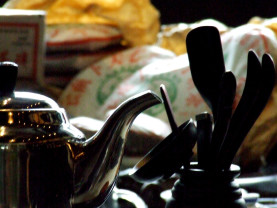 om her stock. There is a a huge range of different types of tea in China, possibly thousands of them. This makes it very difficult for the newcomer to tea drinking to take in all the different qualities, types and tastes. In China the main way tea is classified is by the amount of fermentation that has taken place during the process of making the tea. Actually fermentation is the wrong word since the process is more akin to composting where the tea leaves are left open to the oxygen which promotes bacterial decomposition in the cell structure of the leaves. Sometimes called ‘withering’. After the leaves have been oxidised, or not in some cases, they are then dried to arrest the process of fermentation.
om her stock. There is a a huge range of different types of tea in China, possibly thousands of them. This makes it very difficult for the newcomer to tea drinking to take in all the different qualities, types and tastes. In China the main way tea is classified is by the amount of fermentation that has taken place during the process of making the tea. Actually fermentation is the wrong word since the process is more akin to composting where the tea leaves are left open to the oxygen which promotes bacterial decomposition in the cell structure of the leaves. Sometimes called ‘withering’. After the leaves have been oxidised, or not in some cases, they are then dried to arrest the process of fermentation.
Where the tea is grown is also important as different regions have different climates, soil compositions and traditions associated with the growing and making of tea. Just like with wine there are also many varieties of tea bush and sometimes tea’s are made with blends of different bush. In addition the age of the bush can be very important and some teas are harvested from trees rather than from cultivated fields. All this leaves my head swimming but over time it has started to make sense. I guess learning about tea takes a lifetime and I am only just scratching the surface so far.
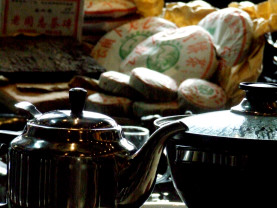 Making a good quality cup of tea is a complex process and people study for years to attain the status of Tea Master. You also need the right Tea Tools for the job probably including a Tea Tray to catch the excess water that is produced during the brewing of the tea. After a person’s cup is filled, that person may knock their bent index and middle fingers (or some similar variety of finger tapping) on the table to express gratitude to the person who served the tea. This custom is said to have originated in the Qing Dynasty when Emperor Qian Long would travel in disguise through the empire. Servants were told not to reveal their master’s identity. One day in a restaurant, the emperor, after pouring himself a cup of tea, filled a servant’s cup as well. To that servant it was a huge honour to have the emperor pour him a cup of tea. Out of reflex he wanted to kneel and express his thanks. He could not kneel and kowtow to the emperor since that would reveal the emperor’s identity so he bent his fingers on the table to express his gratitude and respect to the emperor.
Making a good quality cup of tea is a complex process and people study for years to attain the status of Tea Master. You also need the right Tea Tools for the job probably including a Tea Tray to catch the excess water that is produced during the brewing of the tea. After a person’s cup is filled, that person may knock their bent index and middle fingers (or some similar variety of finger tapping) on the table to express gratitude to the person who served the tea. This custom is said to have originated in the Qing Dynasty when Emperor Qian Long would travel in disguise through the empire. Servants were told not to reveal their master’s identity. One day in a restaurant, the emperor, after pouring himself a cup of tea, filled a servant’s cup as well. To that servant it was a huge honour to have the emperor pour him a cup of tea. Out of reflex he wanted to kneel and express his thanks. He could not kneel and kowtow to the emperor since that would reveal the emperor’s identity so he bent his fingers on the table to express his gratitude and respect to the emperor.
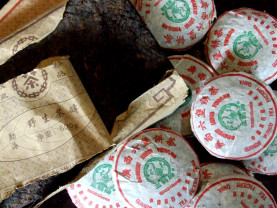 Tea drinking is an elegant pastime, a relaxing and healthy way to pass the time in good company with good conversation. This old tradition is very much on the comeback in modern China, you could say it is a sign of the times and an indicator of the way peoples lives have improved over the last twenty years. Tea culture also reflects the history and traditional values of Chinese culture and the people here celebrate the old ways now with a tasty cup of tea. It is said that when you get up in the morning there are seven things to think about: oil, salt, wood, rice, soy sauce, vinegar and tea!
Tea drinking is an elegant pastime, a relaxing and healthy way to pass the time in good company with good conversation. This old tradition is very much on the comeback in modern China, you could say it is a sign of the times and an indicator of the way peoples lives have improved over the last twenty years. Tea culture also reflects the history and traditional values of Chinese culture and the people here celebrate the old ways now with a tasty cup of tea. It is said that when you get up in the morning there are seven things to think about: oil, salt, wood, rice, soy sauce, vinegar and tea!
If you would like to read the orginal guide to tea that was written back in 2008 then you can download it here. It includes more description of the types of tea and includes a handy guide to how to make tea the Chinese way.
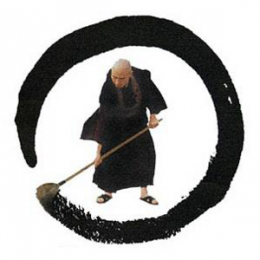






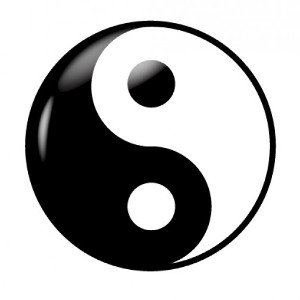 China Tai Chi Guide
China Tai Chi Guide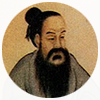 Five Elements Academy
Five Elements Academy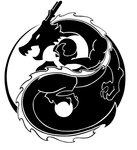 Long Tou Shan Tai Chi School
Long Tou Shan Tai Chi School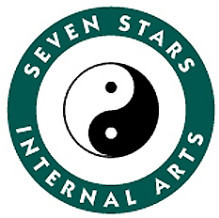 Seven Stars Internal Arts
Seven Stars Internal Arts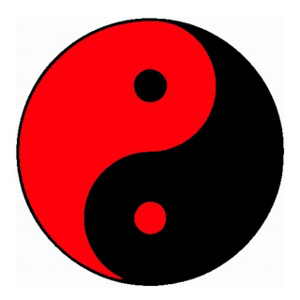 Traditional Tai Chi School
Traditional Tai Chi School Wandering Dao, China
Wandering Dao, China